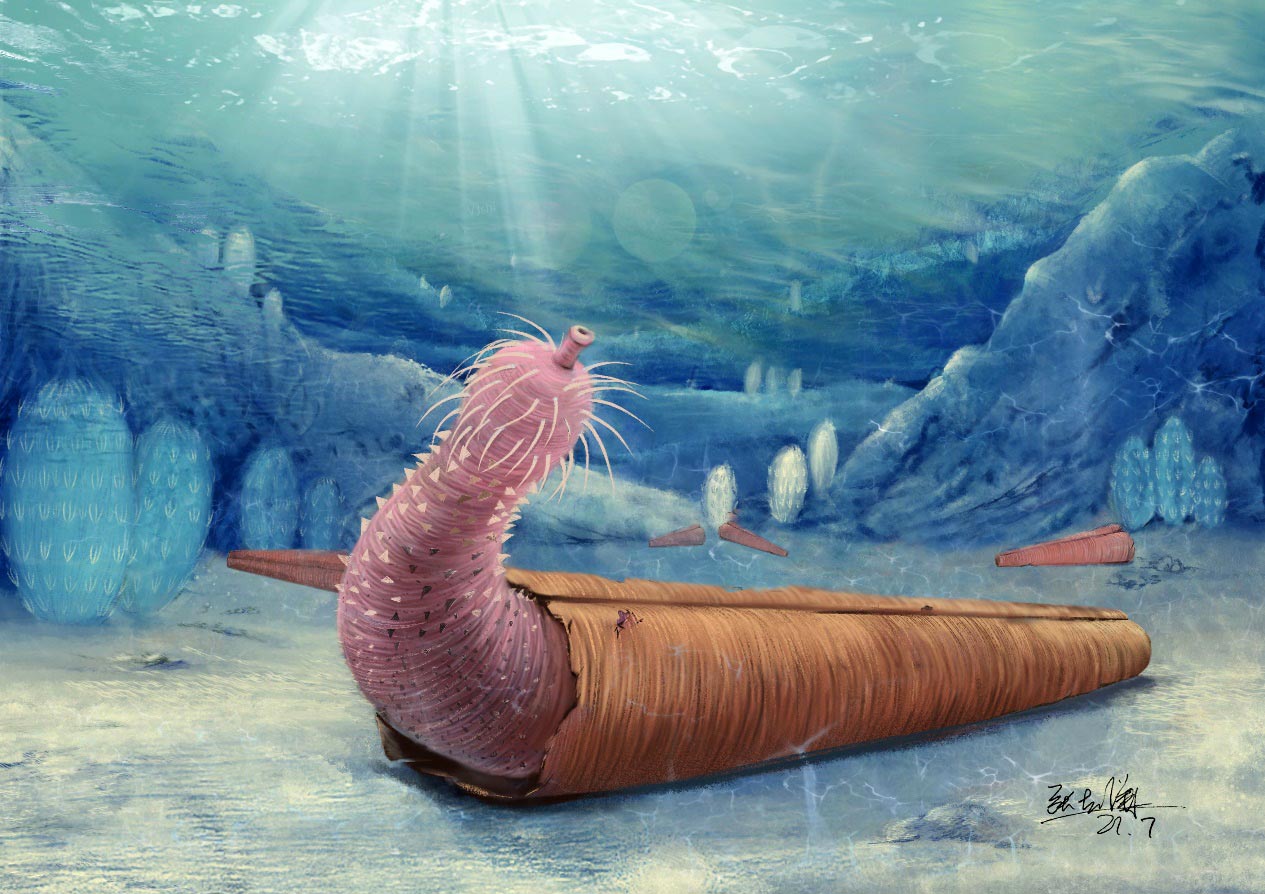Prehistoric ‘penis worms’ were the first creatures to use discarded shells to avoid predators, study finds
Findings indicate key role of predators in shaping ecology and behaviour in very early stages of animal evolution, researchers say

Your support helps us to tell the story
From reproductive rights to climate change to Big Tech, The Independent is on the ground when the story is developing. Whether it's investigating the financials of Elon Musk's pro-Trump PAC or producing our latest documentary, 'The A Word', which shines a light on the American women fighting for reproductive rights, we know how important it is to parse out the facts from the messaging.
At such a critical moment in US history, we need reporters on the ground. Your donation allows us to keep sending journalists to speak to both sides of the story.
The Independent is trusted by Americans across the entire political spectrum. And unlike many other quality news outlets, we choose not to lock Americans out of our reporting and analysis with paywalls. We believe quality journalism should be available to everyone, paid for by those who can afford it.
Your support makes all the difference.Strange-looking sea animals colloquially called “penis worms”, which lived more than 500 million years ago, may have been the earliest to employ a hermit crab lifestyle by using the discarded shells of other organisms as shields against predators, a new study has suggested.
While modern-day hermit crabs are well known for using discarded snail shells as shelters, researchers have found that penis worms invented this lifestyle at the dawn of the earliest animal ecosystems during the Cambrian period – hundreds of millions of years before hermit crabs first evolved.
The study was conducted by scientists from Yunnan University in China and Durham University in England, and published in the journal Current Biology. The scientists studied collections of fossil deposits in Guanshan, China, in which soft tissue — such as the bodies of worms — were preserved alongside shelly material that makes up conventional fossil records.
They found four specimens of penis worms belonging to the genus Eximipriapulus inside conical shells of hyoliths — a long-extinct fossil group.
Since predators during this Cambrian era were plentiful and aggressive, scientists said the penis worms would have taken permanent shelter in empty shells.
“The worms are always sitting snugly within these same types of shells, in the same position and orientation. The only explanation that made sense was that these shells were their homes — something that came as a real surprise,” the study’s co-author Martin Smith of Durham University said in a statement.
Until now, this kind of “hermitting lifestyle” — involving the adoption of a different organism’s exoskeleton — has never been documented or observed in any organism living earlier than the “Mesozoic Marine Revolution” period 251 million to 66 million years ago, when there was a rise of shell-crushing and boring predators, the scientists said.
The findings, the researchers added, indicate the key role of predators in shaping ecology and behaviour in the very early stages of animal evolution.
The evolution of this trait independently in the immediate aftermath of the “Cambrian explosion” about 541 million years ago when modern animal body plans rapidly arose, highlighted the remarkable speed and flexibility of the evolutionary process, the scientists added.
“Not long before these organisms existed, there was nothing alive more complex than seaweeds or jellyfish: so it’s mind-boggling that we start to see the complex and dangerous ecologies usually associated with much younger geological periods so soon after the first complex animals arrive on the scene,” Dr Smith added.
Join our commenting forum
Join thought-provoking conversations, follow other Independent readers and see their replies
Comments